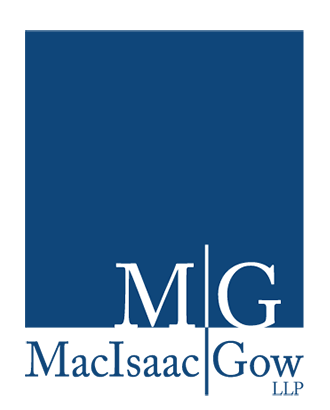Navigating an Ontario personal injury lawsuit doesn’t have to be daunting. At MacIsaac Gow LLP, we recognize that the process may initially seem intimidating, but fear not! We are dedicated to being your trusted allies every step of the way. Understanding the procedures involved in filing a personal injury claim is vital to protect your legal rights and ensure fair compensation for the damages you have endured. In this blog post, we present a comprehensive, step-by-step guide that will empower you to tackle an Ontario personal injury lawsuit with confidence.
Understanding Personal Injury Lawsuits in Ontario
Personal injury lawsuits in Ontario aim to compensate individuals who have suffered physical or psychological injuries due to someone else’s negligence. These lawsuits can be complex, involving various legal procedures. The primary goal is to hold the at-fault party accountable and ensure the injured party receives just compensation for their losses and damages. To navigate an Ontario personal injury lawsuit successfully, it’s crucial to have a thorough understanding of the legal system and process.
Fact Finding and Legal Research
In this phase, both parties gather and investigate evidence to support their case. This process includes obtaining medical records, police reports, witness statements, and other relevant documentation. Additionally, legal research is conducted to analyze applicable laws, statutes, and precedents that may impact the case’s outcome. This phase forms the foundation of a strong lawsuit and allows for a better understanding of the evidence and legal arguments’ strengths and weaknesses.
Preparation and Exchange of Pleadings
A personal injury lawsuit in Ontario begins with a formal pleadings exchange between the involved parties. The plaintiff files the statement of claim, which outlines the case’s facts, including the parties’ names, the amount of compensation sought, and supporting evidence. The defendant responds with the statement of defence, addressing the allegations made in the statement of claim and presenting any factual contentions or defences. After the defendant’s statement of defence is filed, the plaintiff’s lawyer may prepare a reply to address the defendant’s contentions. This reply concludes the pleadings stage of the lawsuit. Following the exchange of pleadings, both parties may choose to participate in discovery to exchange evidence and learn more about each other’s case.
Evidence Exchanged Through Discovery
During the discovery phase, both parties exchange evidence gathered to support their case. This includes documents, photographs, medical records, expert reports, and other relevant information. Each side has the opportunity to examine and question the opposing party’s evidence through oral examinations or written questions, known as interrogatories. This phase is vital for gaining a comprehensive understanding of the evidence and arguments presented at trial and can lead to potential settlement discussions based on the strength of the evidence.
Mediation Process
If the pre-trial conference doesn’t result in a settlement, the next step in an Ontario personal injury lawsuit is mediation. A neutral third-party mediator meets with both parties to try and find a resolution. Mediation can save time and money compared to a trial. If a settlement is reached during mediation, the case is concluded; otherwise, it proceeds to trial. Having an experienced personal injury lawyer during mediation ensures your interests are protected, and you receive fair compensation.
Pre-Trial Conference
The pre-trial conference represents the last chance for both parties to reach a resolution before heading to trial. During this stage, the judge carefully examines the evidence and may propose settlement suggestions. It is mandatory for both parties to be present and come prepared with their respective settlement offers. Failing to reach a settlement at this stage will result in the case proceeding to trial. Taking the pre-trial conference seriously and ensuring thorough preparation can be immensely beneficial, saving valuable time and money for all parties involved.
Going to Trial
The case will proceed to trial if a settlement is not reached during the pre-trial conference. Both parties present their evidence and arguments to a judge or jury, who will decide the outcome of the case. It’s essential to have a skilled personal injury lawyer by your side to present your case and advocate for fair compensation effectively. Though trials can be lengthy and complex, they provide an opportunity for your story to be heard and justice to be served.
Contact a Reputable Personal Injury Lawyer in Mississauga
Navigating an Ontario personal injury lawsuit can be complex and daunting. The legal jargon and intricacies involved can be overwhelming for those pursuing a lawsuit. To ensure you receive fair compensation for your injuries, working with a reputable personal injury lawyer in Mississauga is crucial. A skilled lawyer provides valuable guidance throughout the lawsuit process, helps you understand your rights, and guides you through each legal step. They can assist in gathering and presenting evidence, negotiating with the opposing party, and preparing your case for trial. Hiring a competent lawyer significantly increases your chances of receiving the compensation you rightfully deserve.
At MacIsaac Gow LLP, our expertise spans various domains, encompassing personal injury and disability litigation, commercial disputes, and a wide array of general litigation matters. We have argued matters at the highest level of court in Ontario and have helped shape personal injury law with court decisions. Contact us today for a free consultation.

